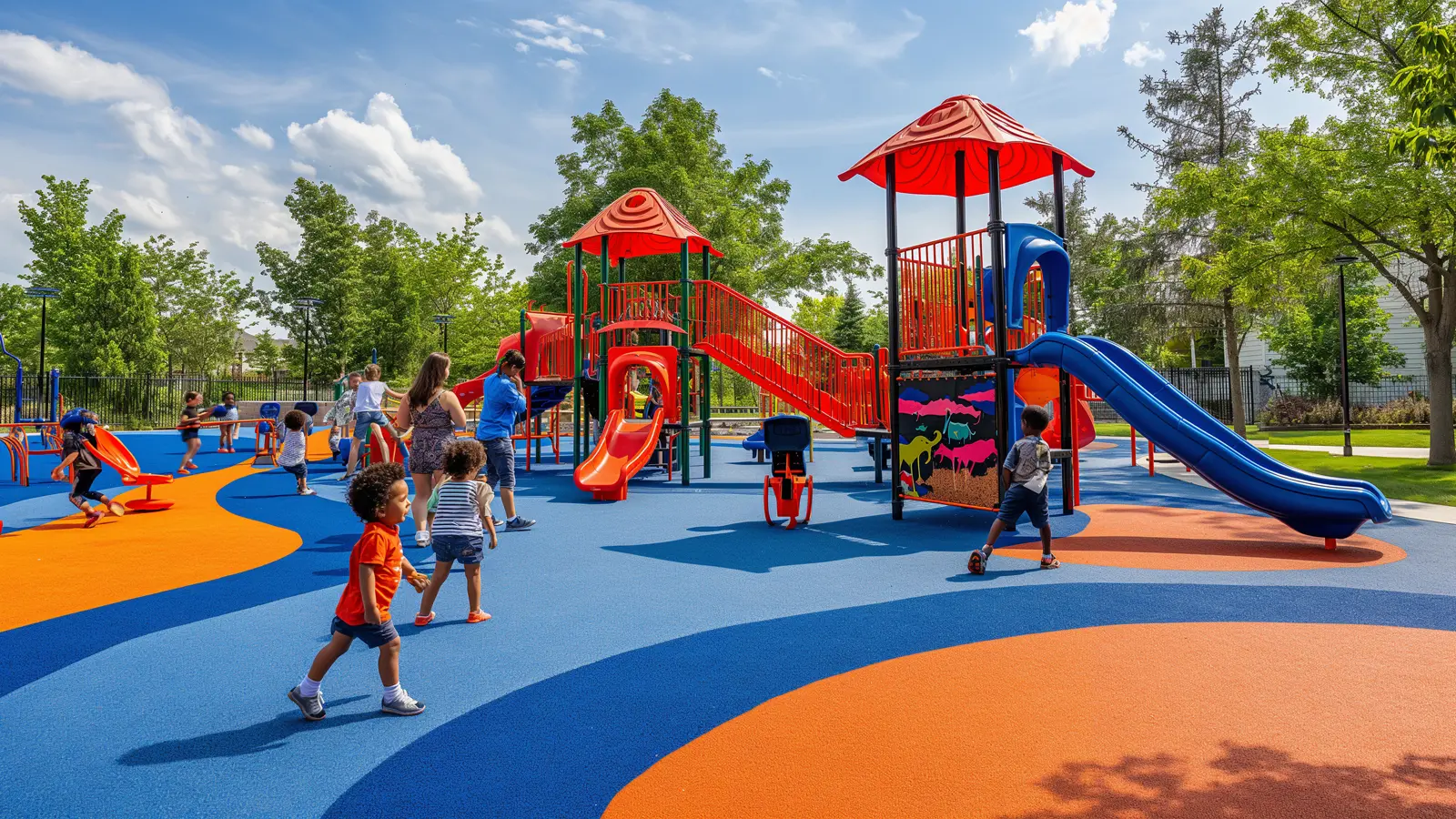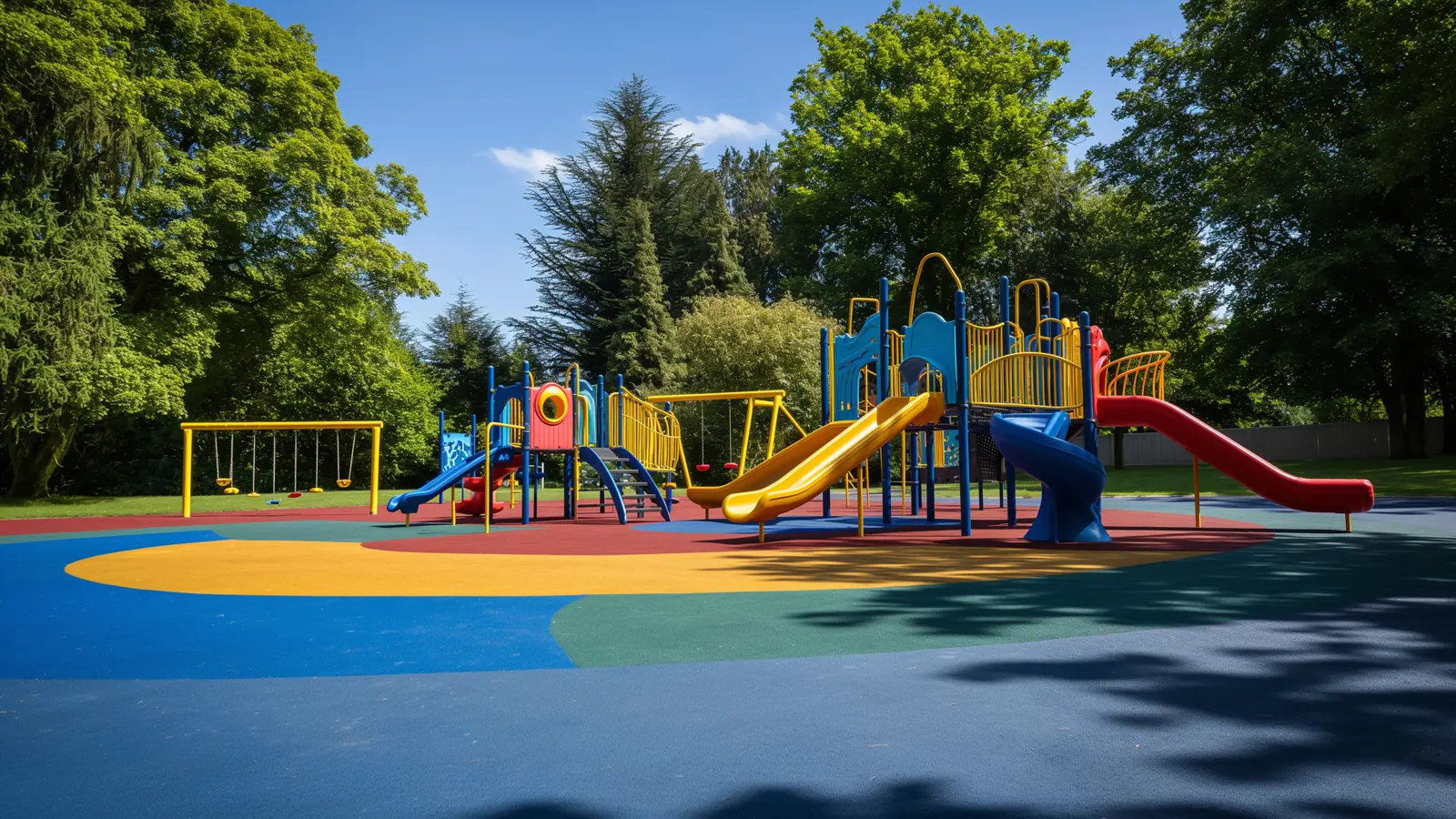2024-06-07
Innovative Trends of Modern Playground Safety Features
Playgrounds are essential for child development and community building, where kids can explore, interact and develop physical and social skills. These public spaces are more than just fun and recreation; they’re where creativity and imagination happen for kids of all ages. In a good playground or park, kids can do physical activities that promote healthy growth and motor skills and social activities that build communication and teamwork skills. Parks and playgrounds are community hubs where families gather and share experiences. So playgrounds are more than just recreation; they’re woven into the fabric of the community.
As playground design evolves, new technologies and trends improve safety, engagement and inclusivity. Interactive elements and inclusive playgrounds for kids with different needs are being developed. This article looks at the latest playground safety features, where technology and nature meet to promote mental health and imaginative play. Property managers, park directors and school administrators will find helpful information on creating modern playgrounds for their community. By staying current with these trends, they can make fun and inspire creativity and imagination so all kids can access safe, engaging and inclusive play.


Technology and Interactive Elements
Interactive play has changed playgrounds, with technology to increase engagement and creativity in kids. Modern playgrounds now have the latest trends, like augmented reality (AR) and virtual reality (VR) elements, where kids can interact with their surroundings in new and exciting ways. Musical play structures and digital panels are examples of these interactive elements, making play more fun and educational. Using technology, playground designers can create spaces for all ages and abilities, making them accessible and inclusive for all kids.
- Augmented Reality (AR) and Virtual Reality (VR): Digital elements in the physical play space.
- Musical Play Structures: Equipment that makes sound, encouraging creative play and musical exploration.
- Digital Panels: Touch screens and interactive displays with educational content and games.
- Adaptive Equipment: Customised playground equipment for kids with different physical abilities.
- Sensory Play Areas: Spaces that stimulate the senses through texture, sound and color, inclusive play.
A new trend in playground design is creating inclusive spaces for kids of all abilities. Adaptive equipment and sensory play areas are key to providing safe and fun experiences for all kids. These modern playgrounds use safe surfacing and smart monitoring to meet the highest safety standards. By focusing on inclusivity and accessibility, modern playgrounds support kids’ physical and mental health, where they can play, learn and grow together.


Nature and Environmental Conservation
Incorporating nature into playgrounds is a new trend where nature meets playground design, using native plants, natural landscapes and water features. This approach promotes environmental conservation and calmness, making the play experience better. Playgrounds with nature offer kids a fun and engaging space and are educational resources for ecological awareness and climate change. Landscape structures designed with sustainability can turn public spaces into green oases for imaginative play and community engagement. This concept includes using native plants to create shaded areas, water play zones with natural streams or ponds and play structures that mimic natural formations like hills, caves and treehouses.
In playground design, climate change and environmental considerations are at the top of mind. Sustainable materials and renewable energy sources are being used to create eco-friendly playgrounds. Recycled rubber and plastic are common materials for playground equipment, reducing waste and environmental impact. Solar panels can power interactive elements, and rainwater harvesting systems can be incorporated into water play areas. These playgrounds inspire creativity and wonder, with elements like water features and native plants to create unique and engaging spaces. Examples of these innovative playgrounds can be found worldwide, showing how nature can enhance the play experience and promote environmental conservation and education. These eco playgrounds are a model for future projects, for example, demonstrating how sustainability can be applied to recreational spaces.
The benefits of nature extend beyond environmental conservation to mental and physical health. Playgrounds with nature encourage kids to play imaginatively, explore and connect with nature. These play experiences reduce stress and anxiety in kids. Natural playgrounds often provide diverse physical challenges like climbing rocks, balancing on logs or navigating uneven terrain, which develop physical and motor skills. By creating spaces that combine play and nature, communities can offer environments that support whole-child development and a lifelong love of the natural world.


Safety and Mental Health Through Inclusive Design
Playground safety innovations are key to creating safe and fun play spaces for children. Modern playgrounds have shock-absorbing surfaces, smart monitoring systems and safe materials like recycled rubber to keep kids safe. These safety features prevent injuries and give parents and carers peace of mind. Inclusive playgrounds also contribute to kids’ mental health and social development, providing a safe space to interact, reduce anxiety and develop social skills.
- Shock Absorbing Surfaces: Recycled rubber to reduce impact and injuries.
- Smart Monitoring: Real-time monitoring of playground usage and safety conditions.
- Safe Materials: Non-toxic and durable materials for playground equipment.
- Inclusive Playground Equipment: Designs for kids of all abilities, equal play for all.
- Community Engagement: Local community designs and maintains playgrounds to create ownership and inclusivity.
Inclusive public spaces are a key focus in modern playground design. By involving the community and using universal design principles, designers can make playgrounds accessible to all kids, including those with disabilities. Inclusive public space design promotes social services and community engagement, turning public spaces into vibrant activity hubs and interactions. These playgrounds deliver many benefits, from physical health to belonging and inclusivity. By putting accessibility and inclusivity first, playground projects can create a brighter future for all communities.


The Future of Play: Modern Playground Solutions
As playground design evolves, we must embrace innovation to create fun, safe and inclusive play spaces. Kids develop creativity, imagination and social interaction in public spaces like parks and playgrounds. By combining technology and nature, modern playgrounds can offer diverse play experiences for all ages and abilities. Innovations like augmented reality, interactive panels and adaptive equipment add fun and educational value to playgrounds so all kids, regardless of physical or cognitive ability, can play and enjoy. These innovations make playgrounds more fun and inclusive so kids from all backgrounds can play together and develop social skills.
Property managers, park directors and school administrators must be aware of these trends to create playgrounds that inspire, engage and support kids of all abilities. By focusing on inclusivity, environmental conservation and innovation, we can make a future where every child can access safe, imaginative and enriching play. Incorporating native plants, sustainable materials and renewable energy into playground design is environmental stewardship and adds value to public spaces. The future of playgrounds is fun and engaging spaces that build a sense of community, inspiring and holistic child development. Through thoughtful design and innovation, we can create genuinely inclusive and beneficial playgrounds so that play remains a vital part of childhood and life.
















